Pets are like family, and owners love to spoil them. So, how can you create a pet business to tap into this unwavering love? If you’re an animal lover, you might already have some ideas. But remember, starting a business takes more than spotting a good opportunity.
Running a pet business isn’t a walk in the park—it requires a deep understanding of different breeds, common pet issues, and the concerns of pet owners.
To help, this article highlights some of today’s most successful pet businesses, showing you how they meet the needs of pets and their owners. Plus, it provides practical tips on how to set up your pet business from scratch.
Is a pet business profitable?
In 2023, US pet owners spent an estimated $143.6 billion on their pets, mostly on food and treats. This shows there’s a market for and interest in pet stores, but are they profitable?
Pet store sales in the US have been increasing since 2012, and this trend is expected to continue through 2028. While there’s money to be made, operating costs can vary depending on the type of pet business you plan to run.
For example, pet walking and sitting services may need small budgets for marketing and insurance costs. But grooming, boarding, and daycare services often encounter higher costs because they need a physical location or mobile premises.
As the business owner, you can set your prices and profit margins to fit your business model.
10 top pet business ideas
Pet businesses can offer a range of services or products, from walking and grooming to selling bowls and chew toys. Some cater to cat and dog owners, while others focus on niche pets like reptiles and arachnids.
In this industry, it’s important to find a niche that’s large enough for steady cash flow but small enough for a unique brand.
While traditional pet stores often offer a mix of products and services, avoid becoming a “do-it-all” business. This can make online branding challenging and puts you in competition with large chains and supermarkets.
Remember, online shoppers tend to prefer specialty stores. So, let’s explore some pet product and service ideas you can specialize in:
- Pet sitting services
- Niche pet food
- Pet jackets and clothing
- Dog walking services
- Pet accessories
- Pet training aids
- Pet grooming
- Pet online courses
- Doggy day care
- Custom keepsakes
1. Pet sitting services
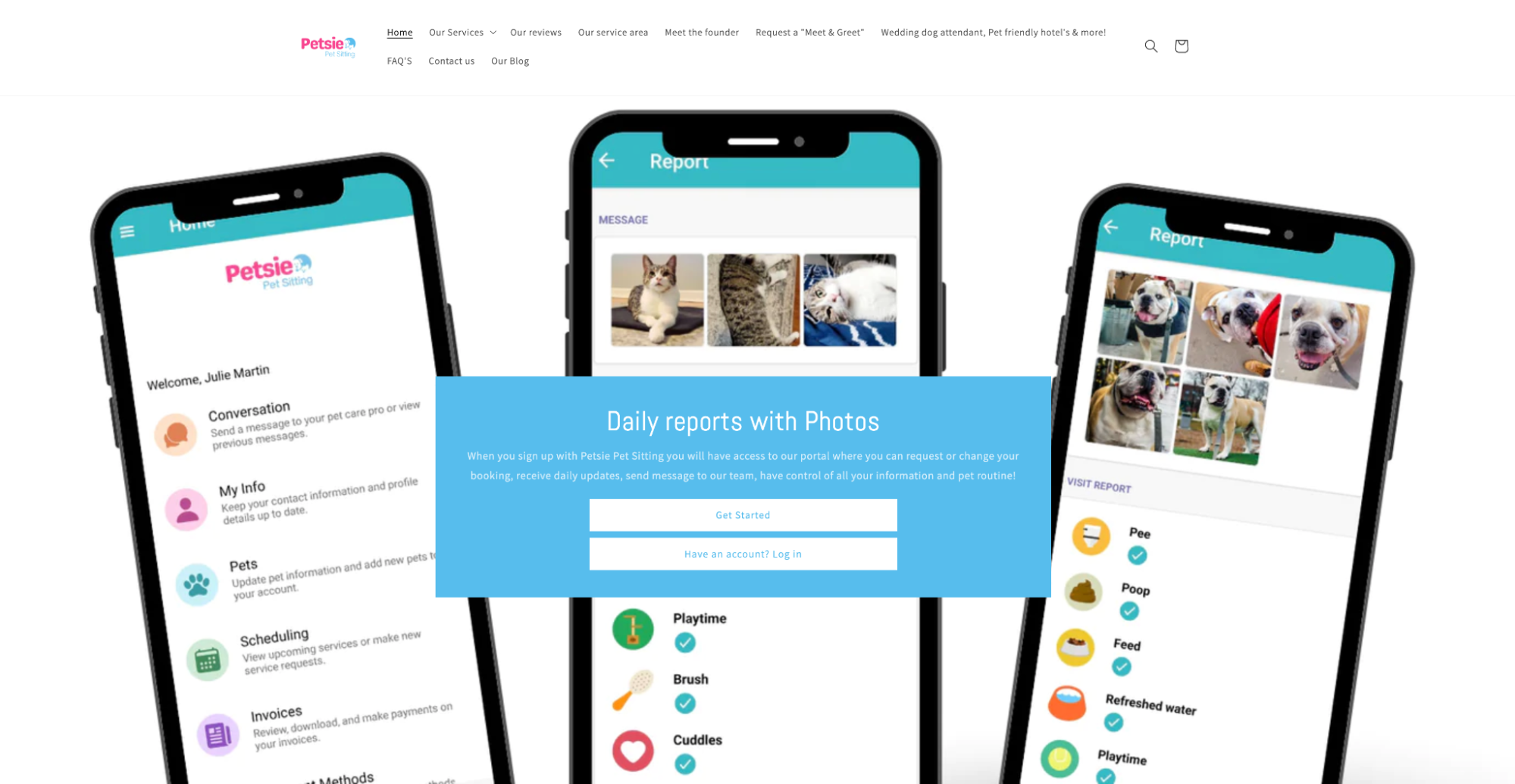
If you enjoy spending time with pets and want to serve your local community, starting a pet-sitting business is a great way to enter the pet industry. Considering that two-thirds of US households have a pet, you’ll have plenty of potential customers.
Starting a pet-sitting business involves relatively low costs. Most of the work lies in marketing and finding your first few clients. Insurance will likely be your biggest expense. But with time, you can build a client list and even expand by hiring employees.
Many pet sitting businesses have moved online to improve customer experience, offering online booking and payment, and daily reports on pets’ activities.
Local pet sitting websites and apps, like Petsie, offer services in specific locations, such as the Greater Toronto Area. Pet owners can use Petsie to book sitters and other services, like dog walking. Some businesses even cater to less common pets, like snakes and birds.
You could build a website or app to offer pet sitting services in your local area—either as a pet sitter yourself, or as a company that hires qualified sitters.
2. Niche pet food

If you’re more interested in creating a product than offering a service, and you care about what pets eat, starting a pet food business could be a good fit.
To stand out in the pet food market, you’ll need to find a niche. You could offer food for specific animals (like dogs or lizards), or cater to specific dietary needs.
Manufacturing pet food at scale can be costly. If you’re making the pet food yourself, you’ll also need to get the necessary licenses and permits. But if you’re good in the kitchen, you can start small and grow over time.
Taking your pet food business online can help you expand your customer base. For instance, Maev makes premium raw food formulas for dogs and sells them directly to customers across the country through their website.
Like Maev, if you have a unique pet food recipe, you could target online customers with a subscription model, ensuring they always receive their next bag of food on time.
3. Pet jackets and clothing

Clothing for pets remains a popular product category. Many pet businesses use dropshipping to provide a wide selection of jackets and accessories for dogs and cats.
Niching is also particularly important when it comes to selling dog clothing. You could create a store specializing in clothing for a particular dog breed, like how Frenchie Shop caters to French Bulldogs. If you have a French bulldog and are looking for clothing, chances are you’ll shop with a brand that specializes in Frenchies.
Alternatively, you could sell pet clothing for specific activities or lifestyles. For instance, Ruffwear offers hiking gear and accessories for outdoor adventures with your pet.
4. Dog walking services

If you love dogs, starting a dog walking business can be a great way to meet new furry friends, get exercise, and earn some extra money.
Like pet sitting, dog walking businesses often serve a local community. You might walk dogs in your local park, or offer unique experiences, like New Hampshire–based Salty Paws, which provides coastal adventures for dogs.
Services like dog walking and pet sitting require excellent customer service. Trust is crucial in this business, and it can only be built by maintaining strong customer relationships.
5. Pet accessories
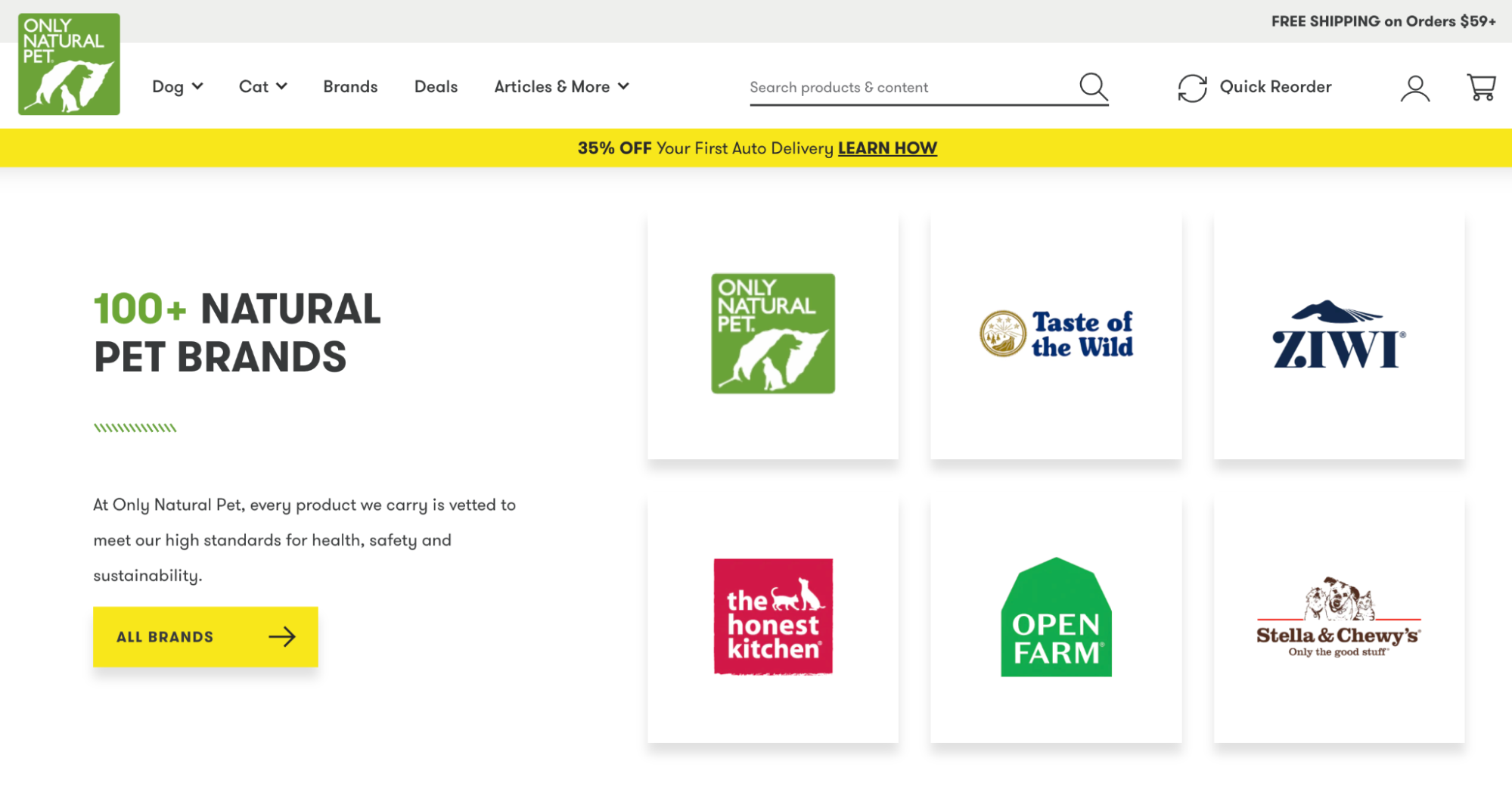
Every pet owner needs basic accessories like food bowls, toys, litter boxes, and leashes. While these essential products are widely available, there’s still a significant opportunity in this market.
You might think selling essentials would make it hard to compete with larger brands, but that’s not necessarily the case. An abundance of options can lead to choice paralysis, which can actually benefit smaller retailers.
By specializing in a specific type of product, you can build a brand and become the go-to place for your customers.
In the pet accessories sector, you could become a certified reseller of specialist or hard-to-find products. For instance, pet supply store Teddybob is a reseller of premium Pidan cat products.
Another idea is to curate products based on a theme or type. For example, Only Natural Pet commits to specifically selling products that meet its “honest promise” criteria, including being free of low-quality ingredients.
6. Pet training aids
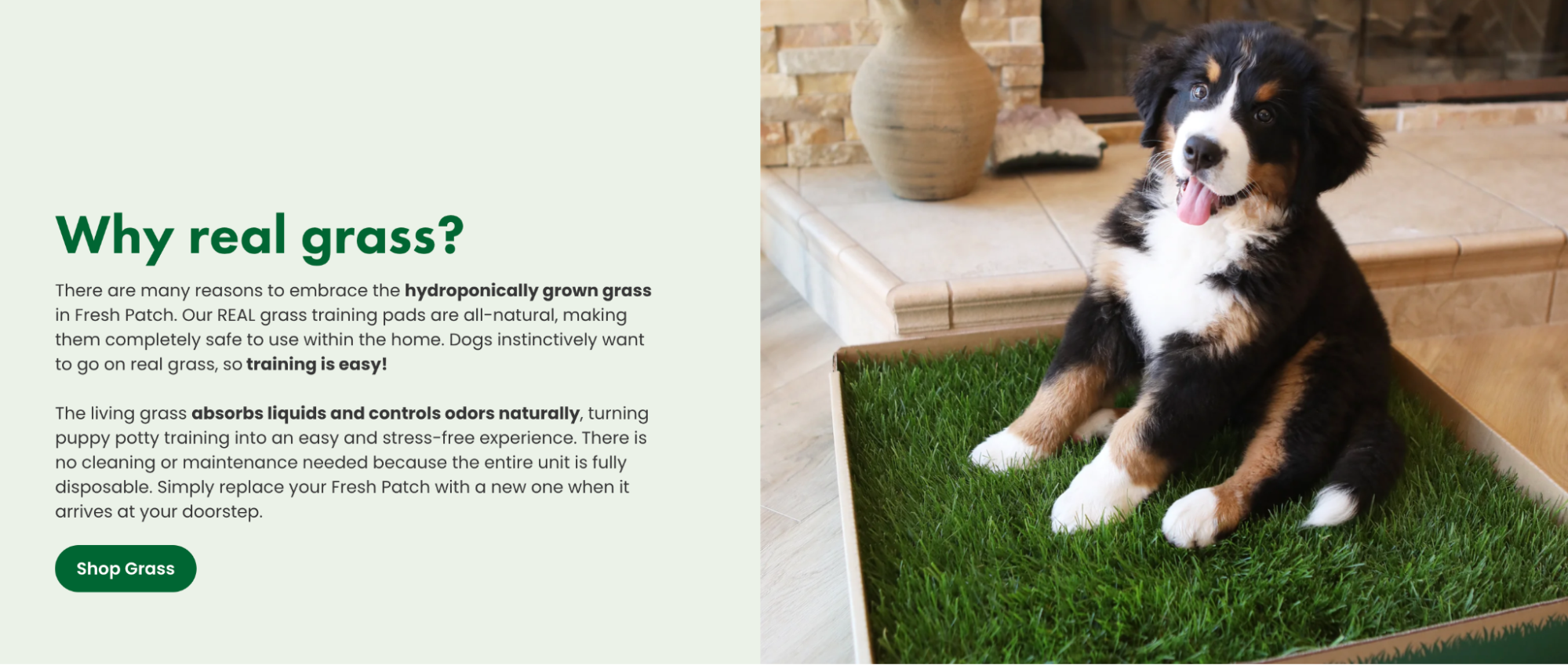
An innovative way to start a pet business is by solving a common problem for pet owners.
From automated feeders that simplify meal times to smart toys that keep pets entertained, the pet industry is ripe with opportunities to improve existing products and offer smarter, more efficient, or more sustainable solutions.
For instance, Fresh Patch, aims to make training easier with puppy potty pads made from real grass. These pads allow dogs to use the bathroom indoors on real grass, easing the transition to outdoor bathroom habits. They also provide a cleaner, naturally absorbent option for apartment dwellers.
7. Pet grooming
Pet grooming is another service you can offer to pet owners. Like walking and sitting, grooming businesses rely on strong customer relationships and trust. Given that the average dog owner spends $99 per year on grooming, there are plenty of business opportunities here.
There are many ways to approach a grooming-based business beyond a physical storefront. Could you offer mobile grooming services? Could you specialize in grooming anxious or rescued dogs? Could you cater to extra-large pets?
Some pet groomers have turned their work into social media content. For example, Girl With The Dogs creates popular, soothing videos of her grooming sessions, which also serve as promotional content for the products she uses and sells via affiliate marketing links.
8. Pet online courses

Pet owners often want to learn pet care skills from experts. If you have specialist knowledge, or can connect pet experts with owners, an online learning business could be a good fit for you.
You don’t need formal qualifications to be a dog trainer. So, while customers may feel more confident working with certified trainers, starting a dog training business has fewer barriers to entry than you might think. In fact, you don’t even need to offer in-person services.
Brands like Wiglo offer comprehensive, science-based training through an app. Customers can choose from more than 100 different programs, from separation anxiety to potty training, to train their dogs at home.
9. Doggy day care

While pet sitting typically involves caring for a single pet in their own home, doggy day care involves looking after multiple pets in a dedicated location. Many families have working pet parents who are away from home for extended periods. Providing a place for their dogs to play during work hours can be invaluable for their pets’ well-being.
Doggy day care can also be a great add-on service to your products. For example, The Hipster Hound offers a range of pet products online and full-service doggy day care at its retail store in Savannah, Georgia.
Another variation of a doggy day care business is pet boarding for families on vacation. From pet passports to vaccinations and transportation, the costs of taking pets on vacation can be significant. Providing a pet boarding service can help lower costs, presenting an opportunity for you to build a thriving business.
10. Custom keepsakes
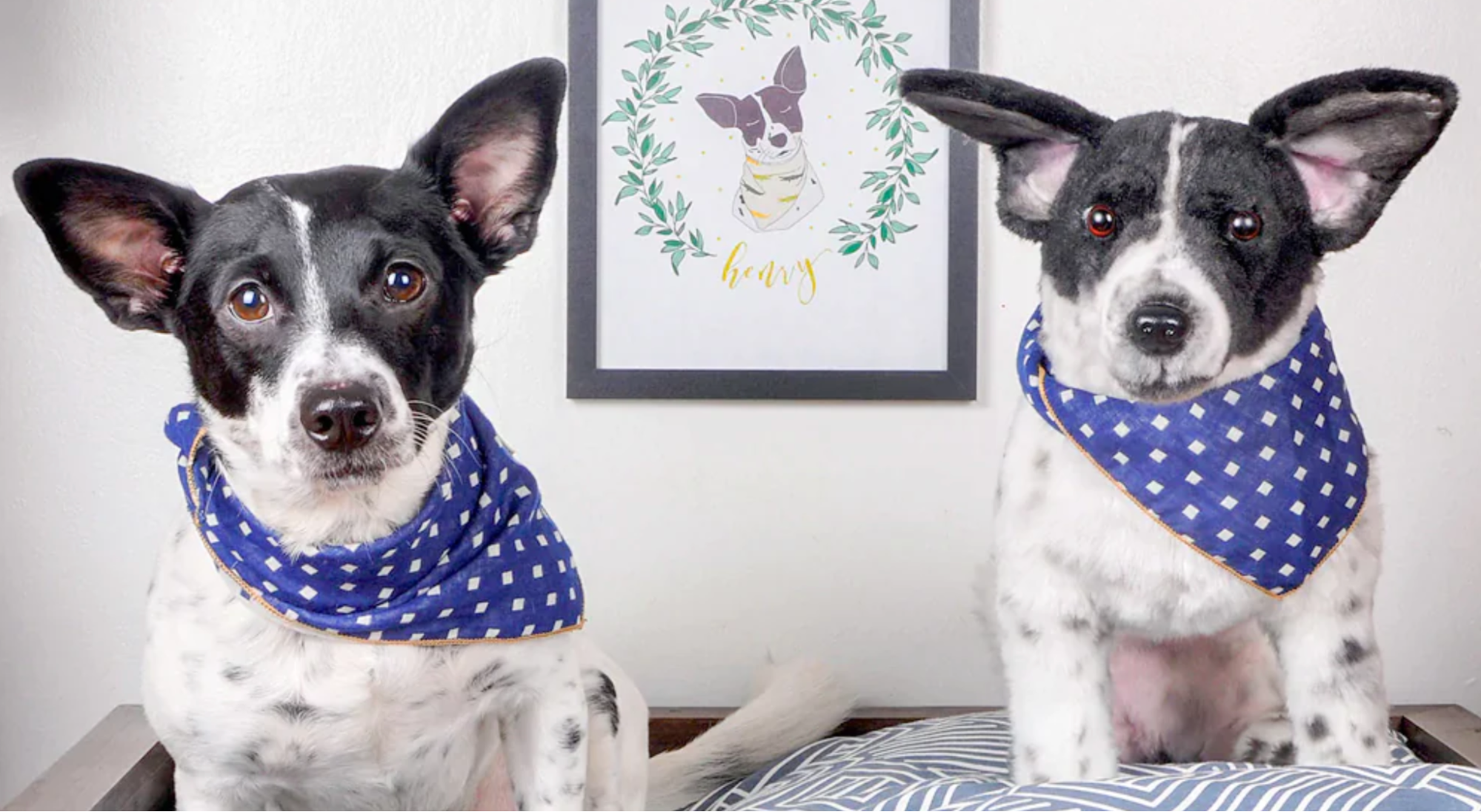
In an era where pets are considered cherished family members, many pet owners appreciate unique and creative ways to celebrate their furry, feathered, or scaled friends.
Pet portraits are a well-known type of custom pet product, but the options in this business niche are only limited by your imagination. Think: custom pet pillows, personalized pet storybooks, or bespoke pet-themed jewelry. Cuddle Clones, for example, creates cute plush replicas of pets, alongside other customizable products such as fridge magnets and sweaters.
How to start a pet business
Decided on an idea? Let’s look at how you can start your pet business today:
- Do market research
- Build your brand
- Create a pet business name
- Write a business plan
- Create your pet products
- Build your store
- Market your pet business
1. Do market research

Market research involves understanding your customers. Your target audience is the group you aim to reach with your marketing—those most likely to become customers. In the pet business, target market niches can be broadly categorized into:
- Luxury: This includes high-end services and products, like human-grade pet food cooked by chefs, premium pet hotels, and pet grooming spas
- Mid-market: This category is ideal if you’re targeting a specific niche. It includes specialty food, grooming products, training aids, and homemade treats.
- Mass market: If affordability is your priority, this category contains standardized products and supplies, like rubber chew toys and food bowls.
Identify which market you want to target, then research the competitor businesses in that market. This will help you understand what customers are already buying and likely to buy from you.
2. Build your brand
Creating a brand is a crucial step in establishing your pet business. Your brand influences everything from your communication style to your overall aesthetic, and it’s essential to stand out to your target audience. Here are the main areas to focus on:
Product differentiation
Who needs another squeaky chew toy shaped like a bone? Offer products with a unique value proposition to stand out. For example, a chew toy with bristles that help brush teeth serves a unique customer need.
Visual identity
Your visual identity includes your logo, website design, social media assets, and packaging. Ensure your visuals effectively communicate your brand to your target audience.
Brand story
A compelling brand story helps customers understand why your business exists and motivates them to take action. It forms the foundation of your business.
3. Create a pet business name
Choosing a simple and descriptive name for your pet business ensures it’s easy for customers to remember, enhancing word-of-mouth marketing.
If you’re struggling to come up with a business name, use this pet business name generator for fresh ideas.
Simply enter a keyword, click ’Generate names’, and browse through thousands of auto-generated name ideas for your company.
4. Write a business plan
Formalize your ideas in a business plan. This document guides your business operations, helps define your business goals and strategies, identifies competition, and evaluates needed resources.
Consider the following:
- Will you have a retail store?
- Will you sell wholesale to other businesses?
- Will you start an ecommerce store?
Your business plan should answer these questions and serve as a reference. Remember to check business laws in your country and state, as you may need a license or permit. Use this free business plan template as a guide.
Legal requirements
Starting a pet business involves more than just a passion for animals. It also requires compliance with legal requirements. Here are some key legal aspects to consider:
Business registration
The first step is to register your business. The process varies depending on your location, but generally, you’ll need to register your business name and structure (such as sole proprietorship, partnership, or corporation) with the appropriate government agency.
Licenses and permits
Depending on your pet business, you may need specific licenses or permits. For example, selling pet food may require a permit from the health department. Always check with your local government for necessary licenses.
Insurance
Insurance is crucial for any business. You’ll need liability insurance for protection in case of accidents or injuries. If you’re offering pet-sitting or dog walking services, consider care, custody, and control insurance, which covers you if a pet gets injured or lost.
Animal welfare regulations
If your business involves caring for animals, you’ll need to comply with animal welfare regulations. These laws vary widely, so it’s important to research the specific regulations in your area. They may cover everything from the size and cleanliness of animal enclosures to the type of food and medical care animals receive.
Always consult with a legal professional to ensure you’re fully compliant with the requirements for your pet business.
5. Create your pet products

If you’re starting a business that sells physical products, you’ll need to decide whether to create or source products. If you’re sourcing, there are two main approaches: dropshipping and manufacturing.
Dropshipping
Dropshipping is a form of online retail where you sell products that are manufactured, stored, and shipped by a third-party company. This model prevents overstocking and frees up time that would normally be spent managing and shipping orders, allowing you to focus more on marketing or other services, such as grooming or dog walking.
Manufacturing
If you prefer a hands-on approach, you can find your own manufacturer. This approach often allows for more product personalization and customization at a cheaper rate, or quicker shipping if you choose local companies.
6. Build your store
Now that your pet products are ready to go, where should you sell them? A great place to start is your own online store.
When it comes to building an online store, Shopify is the easiest way to start. You can build an ecommerce website without any coding knowledge.
When you sign up to Shopify, you get a beautiful storefront, a world-leading checkout, and beginner-friendly marketing tools. You also get access to the Shopify App Store, where you’ll find plug-ins to personalize your website.
Make personal connections with a physical storefront
A physical storefront is the traditional option for connecting with customers. Create a welcoming environment, host in-store events, and provide top-notch customer service to spark word-of-mouth growth.
For brick-and-mortar stores, pop-up shops, and market stalls, Shopify’s POS Go is a mobile device that processes payments and helps manage inventory.
Instantly connect to critical features to grow your business, right out of the box:
Customer service tips
In the pet business, customer service is key. After all, you’re not just serving your customers, but their beloved pets as well. Here are some tips to help you provide top-notch customer service:
- Understand your customers’ needs. Every pet owner has unique needs. Tailor your services to meet them. For instance, products for senior pets differ significantly from those for puppies.
- Be responsive. Always respond promptly to customer complaints. This shows you value their business.
- Provide expert advice. Use your expertise about pets and pet products to guide your customers, positioning yourself as a trusted authority.
- Go the extra mile. Small gestures like a handwritten thank you note or a surprise treat can turn a casual shopper into a loyal customer.
Financial management
Effective financial management is crucial for your pet business, and should be an ongoing process. Regularly review your financial situation and adjust as needed.
- Keep track of your expenses. Monitor every expense, from inventory costs to marketing, to manage cash flow and simplify tax time.
- Set a budget. A budget outlines your expected income and expenses, helping you allocate resources and avoid overspending.
- Monitor your cash flow. Keep an eye on the cash flow moving in and out of your business so that you can pay for enough inventory.
- Plan for the unexpected. Maintain a financial cushion for unforeseen expenses.
- Seek professional help. If managing finances isn’t your strong suit, consider hiring a professional.
7. Market your pet business
Once you’ve built your product and your brand, and have a way of selling to your customers, you’ll need to work on a marketing strategy if you want your business to grow.
If you’re passionate about the pet industry, you may find you’re already doing some of the marketing activities below. However, if you’re new to the industry, or marketing in general, these tips will help you get started with marketing your business.
Start local
Building good relationships with pet owners is key to the sustainability of your business, especially if you’re offering services like grooming or dog walking, which require in-person clientele.
Start by joining Facebook groups and local online communities. Participate in discussions. Offer expertise and services, but remember not to push for sales too hard, especially in early interactions with potential customers.
People are very protective of their pets. Trust is especially important in pet businesses and people will not trust you if they view your interaction as a disingenuous attempt to promote your business. Create Facebook ads with carefully written copy to target pet owners in your local community.
Use social media
If you’ve ever racked your brain trying to come up with social media ideas, you know that it can be challenging to consistently post while maintaining high levels of engagement.
With a pet business, however, you have the perfect content resource. Pets are naturally gifted content creators. Assuming you have one or two pets of your own, good content for pet lovers will be relatively easy to create.
For groomers, walkers, and pet sitters, every interaction with a new four-legged client is a chance for web content. Even the most mundane activities become watchable when a dog or cat is involved.
You can also harness user-generated content from your customers or clients. See how pet accessories brand Clive and Bacon posts images and videos of pets sporting its products:
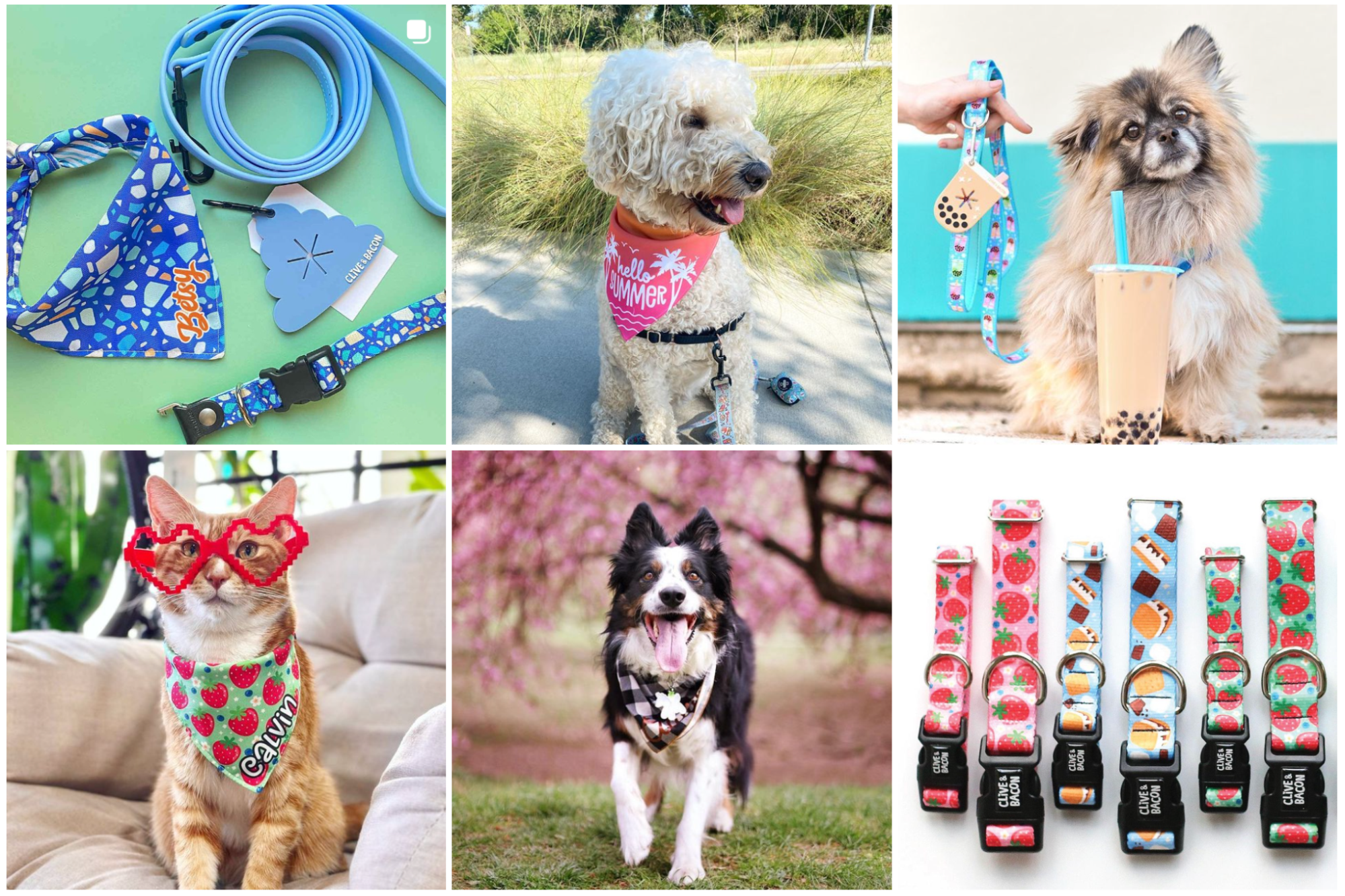
You could also start an affiliate marketing program and work with influencers to promote your products.
Each marketing channel requires a slightly different content type. Start by marketing on one channel, become successful at it, then expand into another channel.
Familiarize yourself with blogging and SEO
Search engine optimization helps your website get found by people who are looking for what you offer. For pet businesses, this often means answering pet owners’ questions.
While writing blog posts takes more work than creating social media content, the payoff can be much bigger. A well-written blog post that answers a common question can bring people to your website for years.
For example, if you groom pets, you could write about how to keep pets clean. If you sell healthy pet treats, you could answer questions about what pets should eat. The more helpful information you provide, the more people will trust your business.
Subscription box pet company BarkBox does this well. It has a website called BarkPost where it shares all informative content for dog owners, from chew toy recommendations to answers to common owner questions.
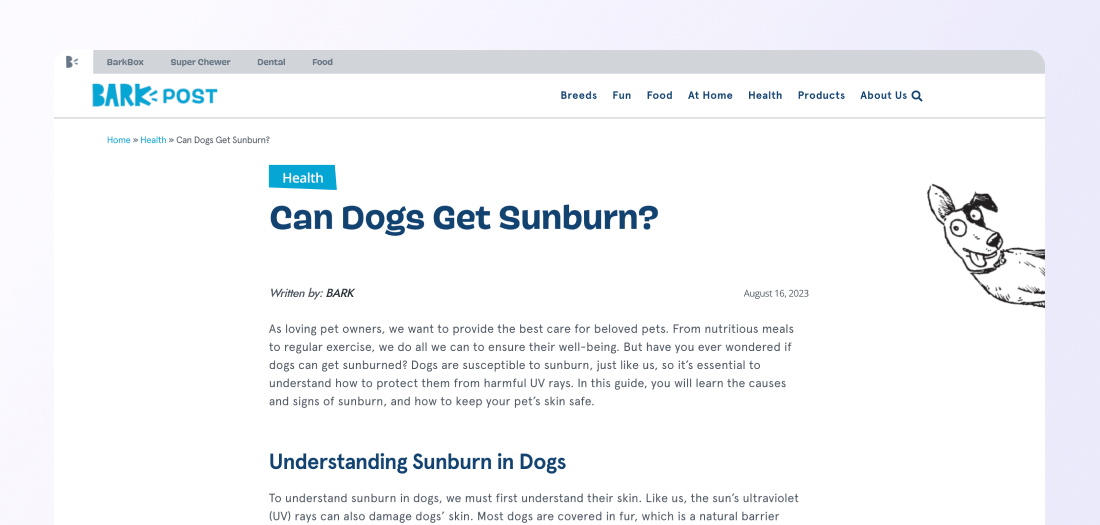
Attend pet-industry events
Networking and professional development are important in any industry. Pet industry events such as workshops, conventions, trade shows, and lectures can be great for an entrepreneur looking to build new skills or become more connected.
There’s value for any business in a trade show, but they’re especially great if you’re selling unique or handmade pet products. If you’re selling products you can’t get anywhere else, an effective trade show campaign can help you secure business relationships and get your product into retail stores.
Build an email list
Another method of marketing your pet business is building an email list. Whether you’re offering bestselling products or award-winning services, email is where you can have one-on-one conversations with your customers.
Email marketing helps you build relationships with existing customers and rescue abandoned carts. For hesitant shoppers, it’s much easier to convince them to give you their email than to make a purchase.
With well-timed and clear messaging in your emails, you can convert the would-be customer into an advocate.
Kicking off your own pet startup
Starting a successful company in an industry you’re passionate about is incredibly fulfilling. For pet lovers looking to make money from home, launching a pet business can provide a rewarding income source for years to come.
Don’t be daunted by the prospect of starting your own business. With the right tools, creating a sustainable and successful pet business is achievable and satisfying. As long as people love their pets, they’ll appreciate services that contribute to their safety and happiness.
Illustration by Pete Ryan
Read more
- AliExpress Dropshipping- How to Dropship From AliExpress
- How to Start a Dropshipping Business- A Complete Playbook for 2024
- 6 Tips for How To Be a Successful Dropshipper (Full Playbook)
- The 13 Best Dropshipping Suppliers in 2024
- How To Source Products To Sell Online
- How To Find Private Label Products and Start Selling
- 11 White Label Products to Sell Online
- 29 Life-Changing Business Opportunities To Try
- Making Spirits Bright- Inside the Workshops of 7 Christmas Store Owners
- Top Online Shopping Categories in the US
Pet businesses FAQ
How much does it cost to start a pet business?
Small business owners spend an average of $40,000 in their first full year of business. But the costs of starting a business vary significantly depending on the business model, number of employees, and whether the business operates online.
What are some profitable pet business ideas?
Profitable pet business ideas include offering pet-sitting services, creating niche pet food, and selling pet training aids. Other options include making and selling pet clothing, grooming services, online pet courses, and custom pet mementos.
Which pet business is most profitable?
Pet grooming is known as the most profitable pet business idea. A mobile grooming business, in particular, is convenient for customers and can cost roughly $10,000 to start.
Is the pet industry a growing market?
The pet industry has been consistently growing over the past decade and growth is projected to continue beyond 2028. This growth is driven by factors such as increased pet ownership and a rise in pet health awareness.
How can I make my pet business stand out?
To make your pet business stand out, focus on a specific pet niche, such as senior pets or border collies. Offer high-quality products or services that meet a well-researched consumer need. Other tips include providing excellent customer service and building a strong online presence through SEO-optimized content and engaging social media posts.






